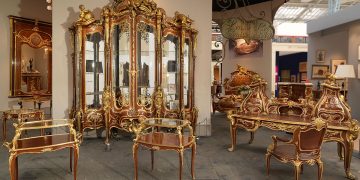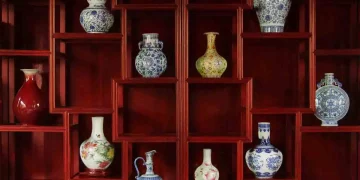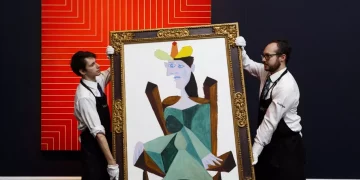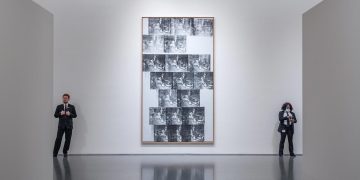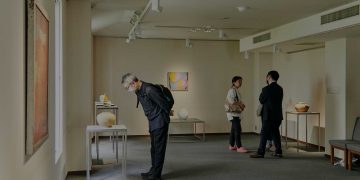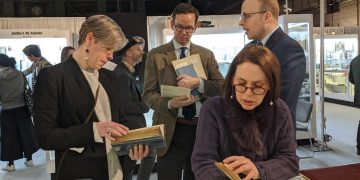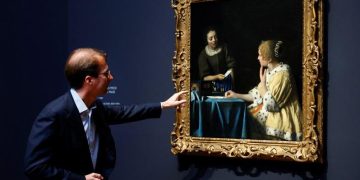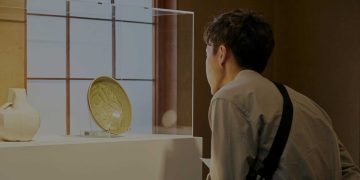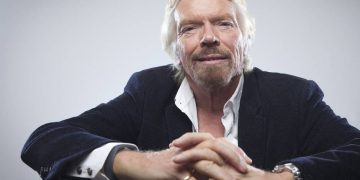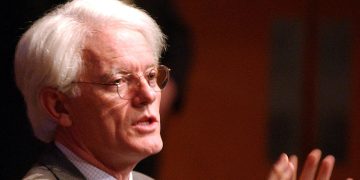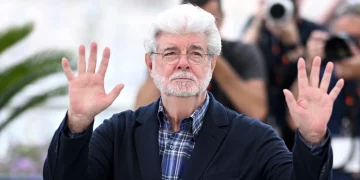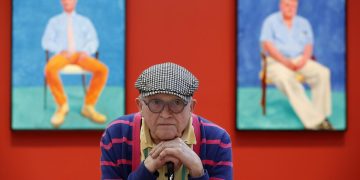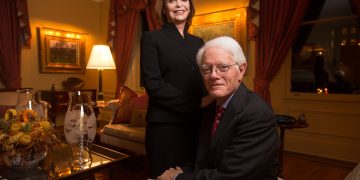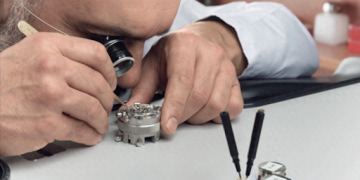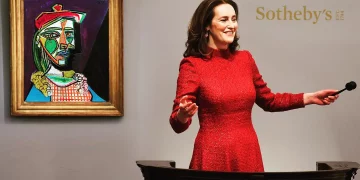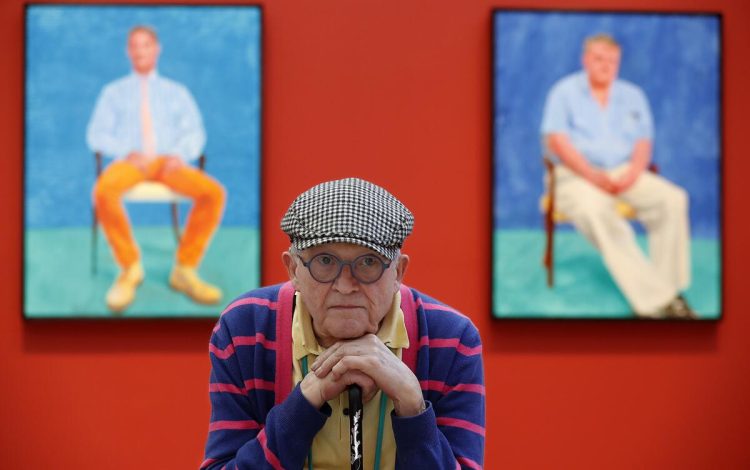David Hockney, one of the most influential artists of the 20th and 21st centuries, is not only renowned for his vivid paintings, groundbreaking use of technology in art, and his unique perspective on landscapes and human nature, but also for his impact on the art investment world. Hockney’s art collection and his approach to collecting art have inspired a whole new generation of investors who see beyond the mere financial value of artwork. They are motivated by creativity, the potential for innovation, and the passion that art can instill.
This article explores how David Hockney’s own art collection, as well as his distinctive vision and engagement with the art world, have sparked a shift in the way emerging art investors think about investing in art. From his engagement with contemporary artists to his groundbreaking approach to digital and technology-driven art, Hockney has demonstrated how art can be a catalyst for both investment and creative exploration.
1. A Personal Connection to Art: Collecting with Passion
David Hockney has always viewed art as a personal expression rather than a mere commodity. His own collection, which spans from works of his contemporaries to pieces he himself finds inspiring, reflects his belief that art should be a reflection of one’s personal values, aesthetics, and passions. As an artist and collector, Hockney advocates for art that speaks to the soul, and his approach to collecting emphasizes the importance of cultivating a genuine emotional connection with the works.
For many new art investors, Hockney’s attitude toward collecting has served as an example. His collection isn’t solely based on financial investment but is rooted in personal meaning and respect for artistic creation. This perspective is motivating a younger generation of investors who are now looking to art not only as an investment vehicle but as a way to engage with their passions and express personal creativity.
Key Takeaway: Hockney’s art collection shows that successful art investing isn’t solely about financial gain; it’s also about building personal connections with the art and fostering a deeper engagement with the creative process.
2. Promoting the New Wave of Contemporary Art
Hockney’s influence on the art world is also seen in his commitment to supporting emerging artists. As an iconic figure in contemporary art, Hockney’s work has had a significant impact on shaping the landscape of the art market. However, what makes him unique is his willingness to support the next generation of talent by collecting works from contemporary artists and actively engaging with the cutting edge of the art world.
By championing younger artists and seeking out works that pushed traditional boundaries, Hockney’s collection became a conduit for discovering fresh talent. This has motivated a new wave of art investors, many of whom are increasingly looking for opportunities to invest in emerging artists. The enthusiasm for new artistic voices and innovative works is growing, and young investors are increasingly seeking to find the next “Hockney” to add to their portfolios, just as Hockney once did.
Key Takeaway: Hockney’s openness to contemporary artists has inspired art investors to take risks on up-and-coming creators, sparking a new era of art investment where innovation, diversity, and fresh perspectives are prioritized.
3. The Intersection of Technology and Art: Hockney’s Digital Pioneering
Perhaps one of the most significant ways in which Hockney has inspired new art investors is through his exploration of technology in art. Known for his embrace of digital tools like the iPad to create works of art, Hockney has demonstrated how technology can expand the boundaries of artistic expression. His work has been a precursor to the rise of digital art and NFTs, which have captured the attention of the modern art investor.
Hockney’s foray into digital art, especially with his groundbreaking use of the iPad, inspired many young investors and creatives to explore the possibilities of digital and interactive art forms. In a market where technology is becoming a significant part of the art conversation, Hockney’s works—such as his digital paintings and videos—have demonstrated that the traditional concept of art can evolve with the times.
Key Takeaway: Hockney’s integration of digital tools and technology into his work has helped pave the way for a new generation of art investors who are excited about the potential of digital art, NFTs, and virtual galleries as valuable assets in the future art market.
4. Pushing the Boundaries of Artistic Innovation
Throughout his career, David Hockney has been a pioneer, constantly evolving his style and techniques to reflect the changing times. From his iconic “joiners” (photo collages) to his landscape paintings and, later, his embrace of digital technologies, Hockney has always sought to push the boundaries of what art can be. His works often blend traditional methods with contemporary experimentation, and he continually seeks to challenge the conventions of representation in art.
For art investors, this attitude toward innovation is highly inspiring. The desire to find new creative boundaries, and the appeal of investing in art that pushes limits, is becoming a growing trend in the market. Many art investors are no longer content with traditional mediums but are instead seeking out innovative works that blend the classic with the cutting edge.
Key Takeaway: Hockney’s commitment to artistic innovation has shown art investors that value can be found in pushing the boundaries of creativity, and that art is not only a static investment but a dynamic and evolving process.
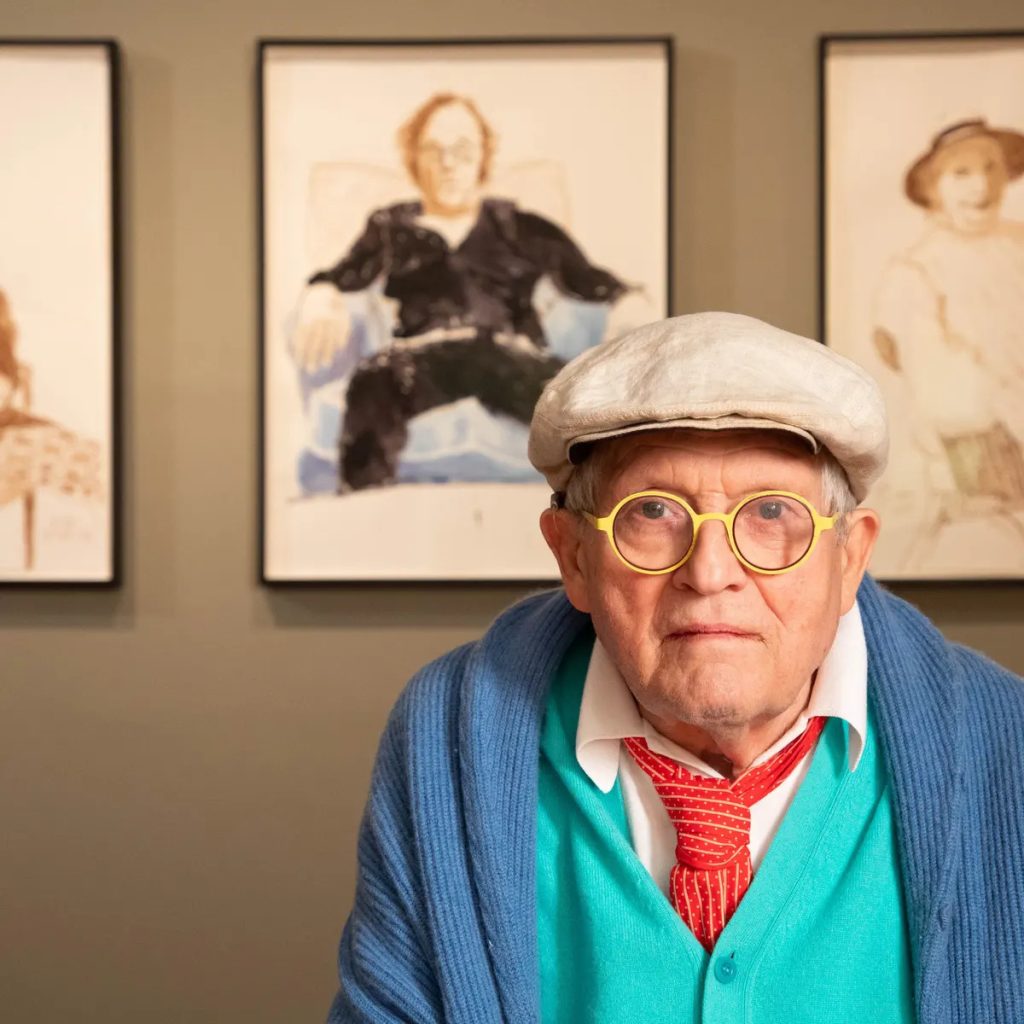
5. Art as a Cultural Commentary: A Reflection of Our Times
In many of his works, Hockney has made a conscious effort to engage with the social and political issues of his time. Whether through his vibrant depictions of landscapes, his exploration of the gay experience, or his commentary on the changing role of technology in society, Hockney’s art is deeply intertwined with the world around him. His works resonate with current global conversations, making them relevant to today’s art investors who see art not only as a financial asset but as a powerful form of cultural expression.
This cultural resonance is another factor that has contributed to Hockney’s influence on emerging art investors. Many new investors are increasingly drawn to art that speaks to contemporary issues, whether it be through political commentary, environmental themes, or technological discourse. They view art as a reflection of the world and a way to make a statement, aligning their investment decisions with their personal values and societal concerns.
Key Takeaway: Hockney’s ability to create art that comments on cultural and societal issues has inspired a new generation of art investors who view art as a reflection of the times and a way to express their values, ideals, and concerns.
6. The Impact of Hockney’s Art Sales on the Market
Hockney’s art collection is not just an example of creative expression but also a highly lucrative investment. Over the years, his works have broken numerous auction records. In 2018, his painting “Portrait of an Artist (Pool with Two Figures)” sold for $90.3 million, making it the most expensive work by a living artist at the time. This monumental sale marked a turning point in the art market, inspiring both new collectors and investors to take a serious interest in contemporary art.
For new art investors, Hockney’s work has provided a valuable lesson in the financial potential of art. His consistent ability to produce pieces that grow in value over time has set a blueprint for aspiring investors looking to capitalize on high-quality, blue-chip art. By looking at Hockney’s record-breaking sales, investors are encouraged to think long-term and view art as a high-potential asset class, capable of delivering substantial returns.
Key Takeaway: Hockney’s record-breaking art sales have demonstrated the immense financial potential of investing in contemporary art. New investors are increasingly aware of how such iconic works can appreciate over time, providing both cultural enrichment and financial gains.
Conclusion
David Hockney’s influence extends far beyond his artistic achievements. Through his personal art collection, engagement with emerging artists, pioneering use of digital technology, and commitment to pushing creative boundaries, Hockney has inspired a new generation of art investors who view art as both an investment and a means of personal expression.
His works not only engage with the social, cultural, and technological issues of our time but also serve as a beacon of possibility for those who seek to navigate the art market with creativity, passion, and foresight. As the art investment landscape continues to evolve, David Hockney’s innovative approach serves as a model for both art collectors and investors, proving that creativity and financial success can indeed go hand in hand.



